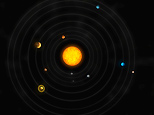
BEIJING (AP) -- Organizers unveiled the "Watercube" swimming venue Monday, one of the more stunning structures built for the 2008 Beijing Olympics.
Known officially as the National Aquatics Center, the Watercube has been dubbed the "cool" building of the Games. The building's design and its translucent, blue-toned outside skin make it look like a cube of bubbles -- like "bubble wrap."
"There are many different buildings in the world and I believe this could be one of the most significant sports venues," said Zheng Fang, an architect and chief of the design team for China Construction Design International.
Forty-two gold medals will be handed out at the Watercube during the Olympics, which start Aug. 8.
After a little more than three years of construction, the facility was officially handed over to the Beijing organizing committee, with President Liu Qi on hand.
Liu and Beijing mayor Guo Jin Long both dipped their hands into the competition pool and seemed satisfied at Monday's brief unveiling ceremony. Guo even put the pool water to his lips.
The venue has 6,000 permanent and 11,000 temporary seats. Like the 91,000-seat National Stadium -- the "Bird's Nest," which will be completed in March -- both are seen as works of art and will anchor the Olympic Green area.
While some argue the gargantuan "Bird's Nest" could become a white elephant, the Watercube has been built to be converted to a shopping area and leisure center with tennis courts, retail outlets, nightclubs and restaurants.
"This building was designed for use after the games," said John Pauline of PTW Architects, one of the lead architects on the Watercube. "We were looking at 30 or 40 years from now."
The outside skin is made of the Teflon-like material known as ETFE, or ethylene-tetrafluoroethylene. Composed of two layers, it's separated by an interior passage that allows the building to breathe like a greenhouse.
The maintenance could be complicated. At the unveiling it was clear the bubbles needed cleaning, soiled by Beijing's dirty air. Officials said this would take about a week and would be done periodically.
The exact cost of the building has been shrouded in secrecy, with estimates ranging from $150 million to more than $200 million. Much of the building was financed by $110 million in private contributions from people in Hong Kong, Macau and Taiwan.
There will be 37 venues for the Olympics. Beijing is the site of 31 -- 12 new, 11 that have been renovated, and eight built as temporary structures. Most are located in four clusters in the north of the city. Five more venues for soccer and sailing are located outside Beijing, and equestrian events will be held in Hong Kong.
"The building is very innovative in how it appears," said John Pauline, a lead architect with PTW. "The aesthetics are cutting edge. In that respect it's incredibly unique. It's also a very functional, a planned building. The building should work like clockwork for the Olympics games."
Organizers will stage a swim meet in the Watercube on Friday to test the facilities.
The Watercube and Bird's Nest are located several hundred meters yards across from each other, situated on either side of a "sacred" north-south axis and promises to shift development. The venues are five miles due north of Tiananmen Square -- the world's largest public plaza -- and the Forbidden City.
There will be 37 venues for the Olympics. Beijing is the site of 31 -- 12 new, 11 renovated, and eight temporary structures. Most are located in four clusters in the north of the city. Five more venues for soccer and sailing are located outside Beijing, and equestrian events will be held in Hong Kong.
The Watercube will host a test event this week. Though it hasn't drawn a top field, at least one swimmer can't wait to test the water.
"It's an important meet for me," said Swedish sprinter Stefan Nystrand. "I think it's great to be here since it's the same pool as the Olympics. I don't know why more top guys aren't showing up."







